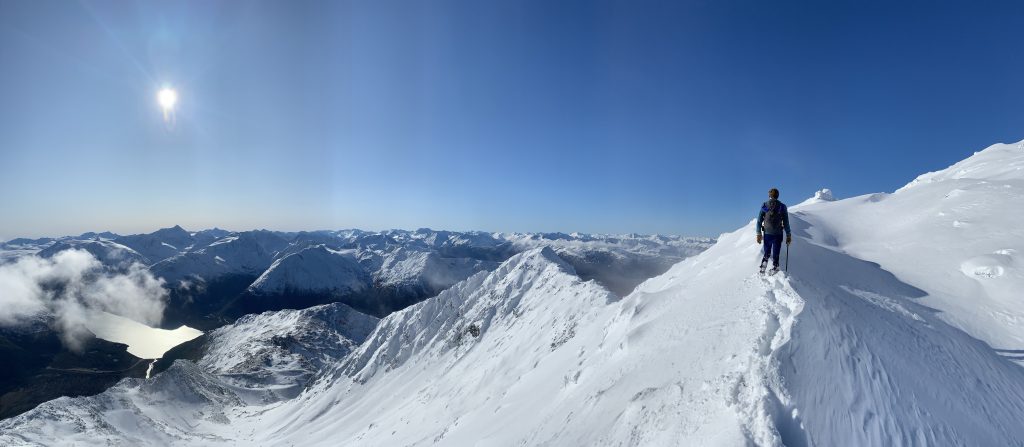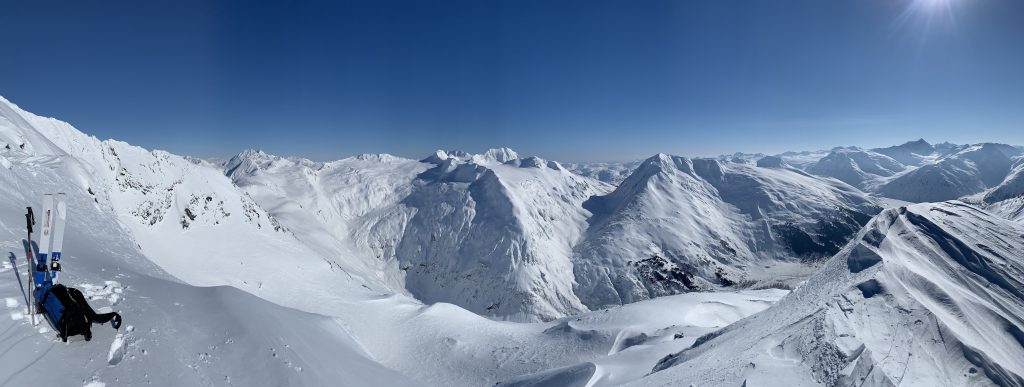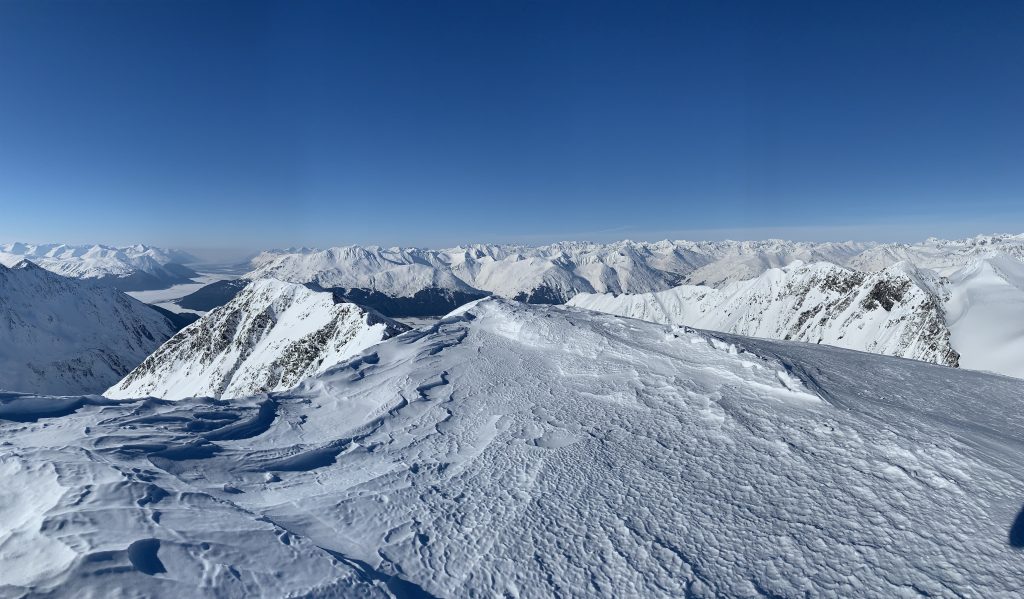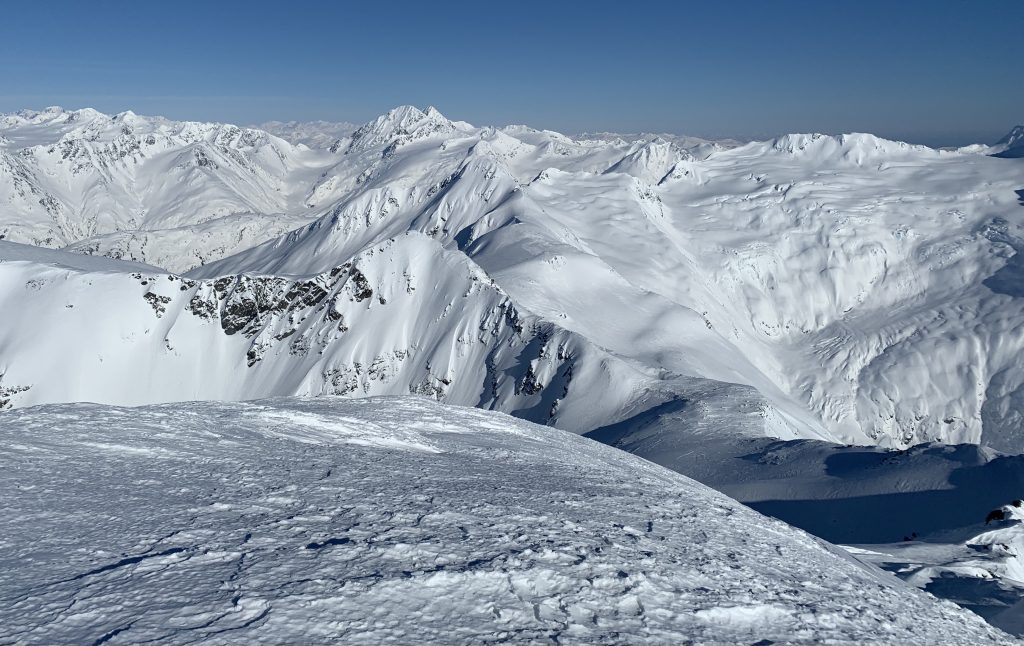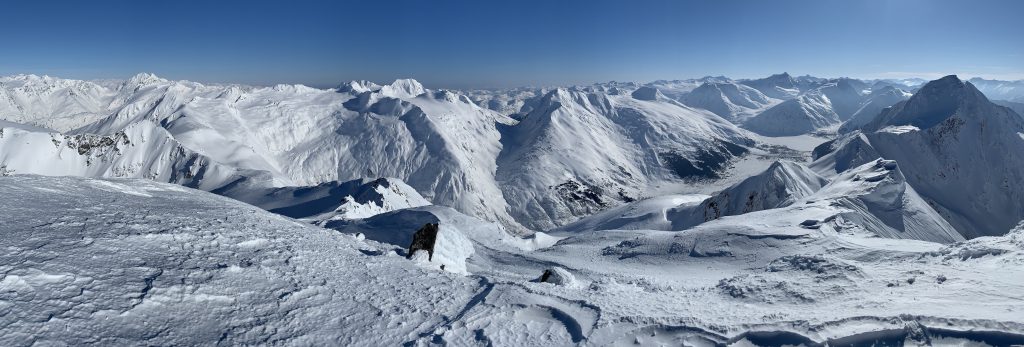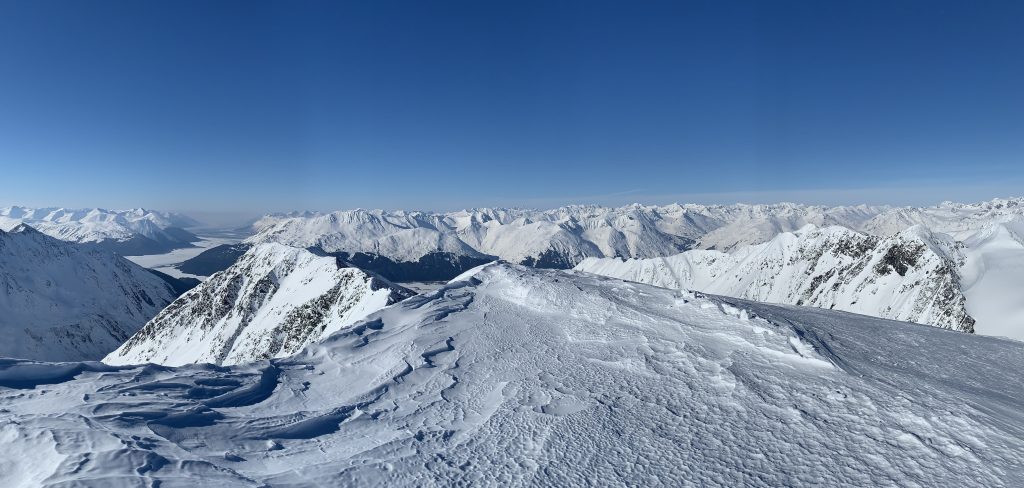The Portage area is relatively neglected when it comes to skiing, much like the Western Chugach Mountains of Chugach State Park were prior to the COVID-19 travel restrictions. Neither of these areas appeal to “powder snobs,” but their terrain and bigness more than compensate for those of us looking for more than “boring powder.” Skiing and climbing around Portage provides a truly Alaskan big-mountain experience. Whereas the world-renowned big-mountain skiing venue of the Valdez area Central Chugach is five hours drive from Anchorage, we’ve got a slice of it less than an hour away by way of the Portage-Whittier area Central Chugach.
This area gets a lot of weather, more often than not has “character-building” snow, access is from near sea level (with the lower elevations remaining relatively brown and snow-free some seasons), and it’s generally ignored from a forecasting perspective by the Chugach National Forest Avalanche Information Center (aka Turnagain Pass Avalanche Center). The terrain is also heavily glaciated and relatively big and complex compared to neighboring Turnagain Pass. All of these factors contribute to the Portage area’s emptiness relative to the crowdedness of Turnagain.
Several years ago, Sam Inouye and I completed a big linkup summitting and skiing Bard, Carpathian, and Byron peaks in a single day. I’d gone back to Portage in more recent years to ice climb and ski other prominent peaks (Middle Glacier and Explorer) on the south side of the Portage Valley, even realizing that (with stable avalanche conditions) non-motorized travel to the Skookum Glacier via Portage Valley is faster than motorized access from the Placer. Despite these great experiences in the Portage Valley, I didn’t really get hooked until autumn 2019.
During the fall of 2019, having become more enamored with glacier travel during this time of year (when crevasses are generally wide open or bridged with super solid neve and firn), I summited a few other peaks in the Portage-Whittier area (Maynard Mountain, Shakespeare Shoulder, and Begich) while adding even more to my to-do list. I climbed the nearly 1200′ prominent Begich Peak on October 12 with Adam Loomis.
Adam and I walked from the parking area at Portage Lake along the Bear Valley railroad tracks to the train tunnel. From there we bushwhacked-scrambled (with a short section of wet, loose, and mossy 4th class on the ascent) up the east face of Point 2780 to the south ridge of Begich.
Adam working his way up through the lower east-facing slopes:
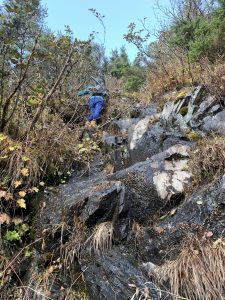
Adam taking a short break on the lower south ridge:
We were prepared for snow on the upper route but didn’t expect as much as there was. We resorted to crawling through several sections (see video) to get as much surface area flotation as possible. Other than the difficult over-snow travel with just mountaineering boots, the route above the steep east-facing slopes is relatively straightforward and doesn’t exceed 3rd class.
Adam and the WNW view from Begich summit: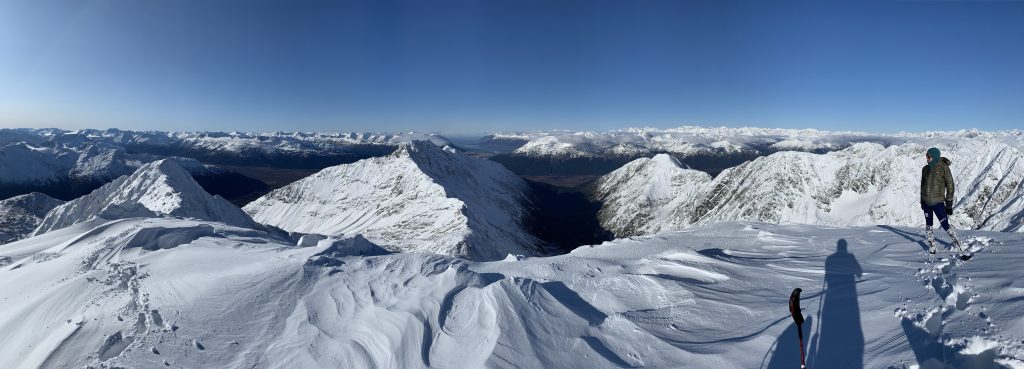
Adam looking south from Begich summit:
Descending east from Begich summit: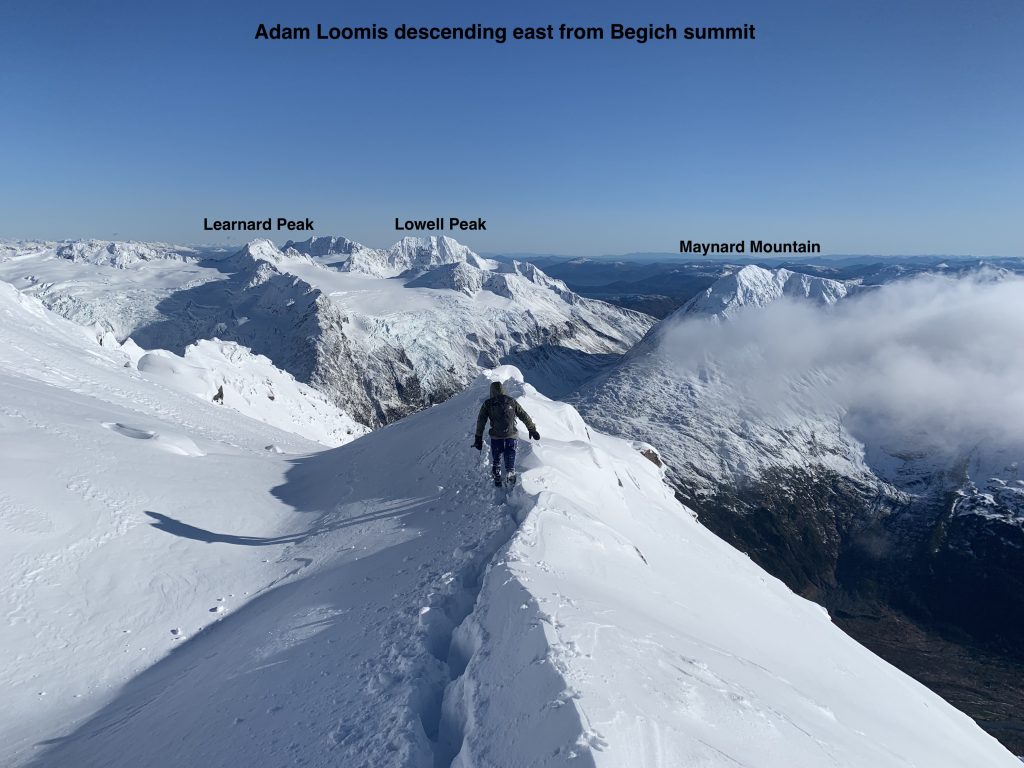
When planning this trip, I’d considered the possibility of tagging both Begich and Boggs. The roughness of the terrain and deep snow had pretty much nixed that idea before we even got to Begich summit. Looking north at the route from Begich to Boggs, it became obvious we definitely didn’t have time for a linkup.
So on March 14, 2020, after driving through the tunnel in Whittier to howling winds that changed our plans there, Jess Tran and climbed and skied Boggs as a fallback. From a climbing (mountaineering) perspective, conditions were excellent. From a skiing perspective, not so much (and this is why, as discussed above, Portage sees relatively little alpine touring traffic).
We skinned from the Portage Lake parking area, across the railroad tracks, and up Bear Valley to a forested knoll and the SE face of Boggs. This SE face is huge avalanche terrain: a continuous 3000’+ of it. But Portage has a maritime snowpack, with relatively good stability in general, and these southerly slopes had already been processed by a few days of high pressure. Uphill travel conditions were quite efficient.
Bear Valley from the lower SE slopes of Boggs: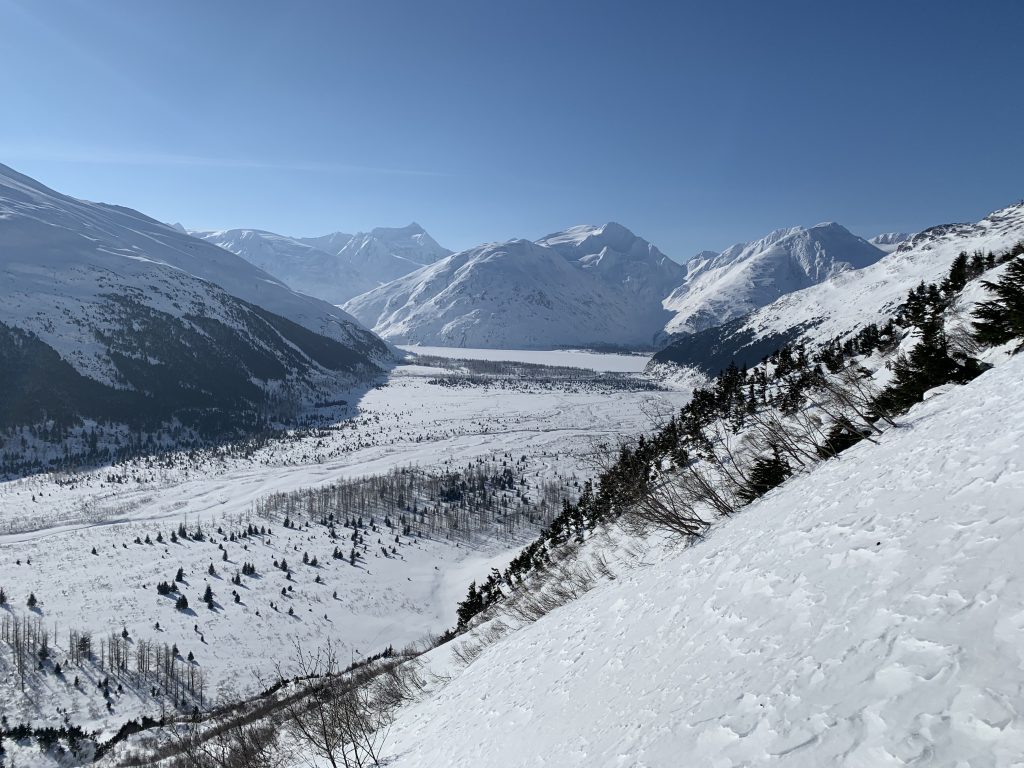
Jess at ~2000′ on the SE slopes: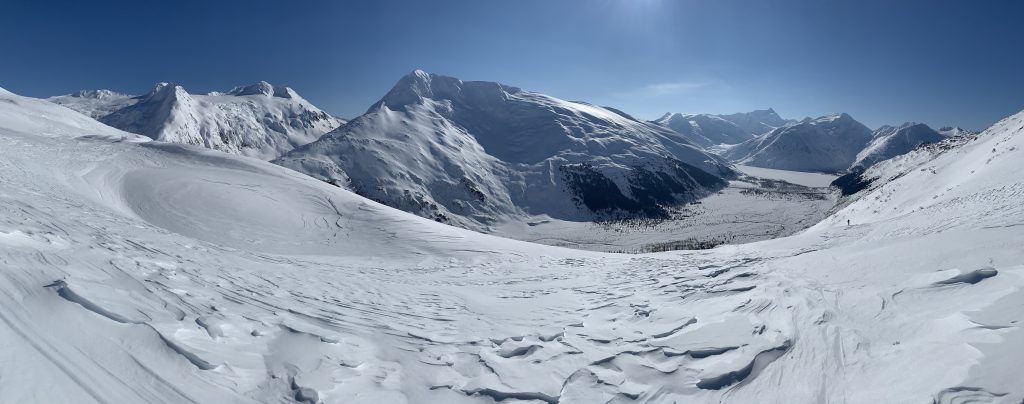
Jess at ~3200′ on the slopes of Boggs 4000′ false summit: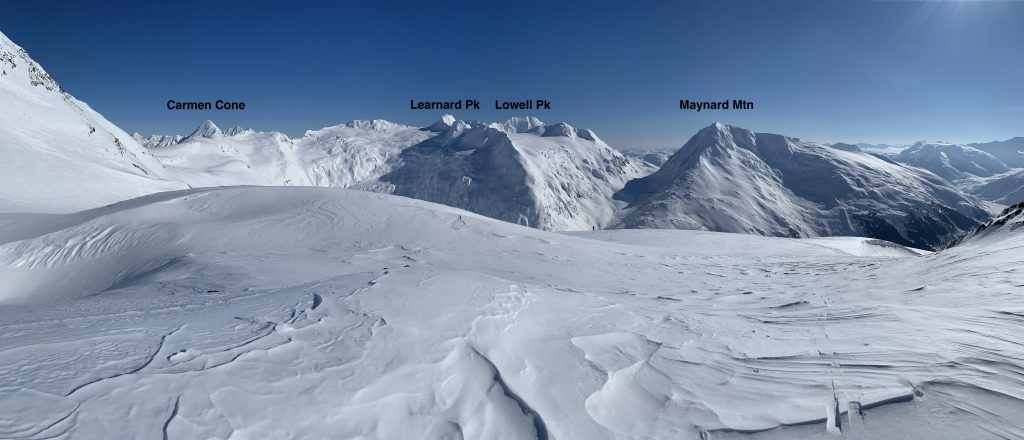
We were able to skin (albeit with ski crampons being mandatory) to the 4000′ false summit of Boggs. From there, things got much more interesting and some proper Chugach mountaineering was in order. Given the technical and questionable (I didn’t have any beta, nor could I find any) nature of the ridge, Jess opted to remain at the false summit and enjoy the perfect spring day (relatively warm, sunny, and no wind). I left my skis on the false summit, got out my ice tool, and began the ridge climb to the true summit.
The south ridge of Boggs from just below the 4000′ false summit: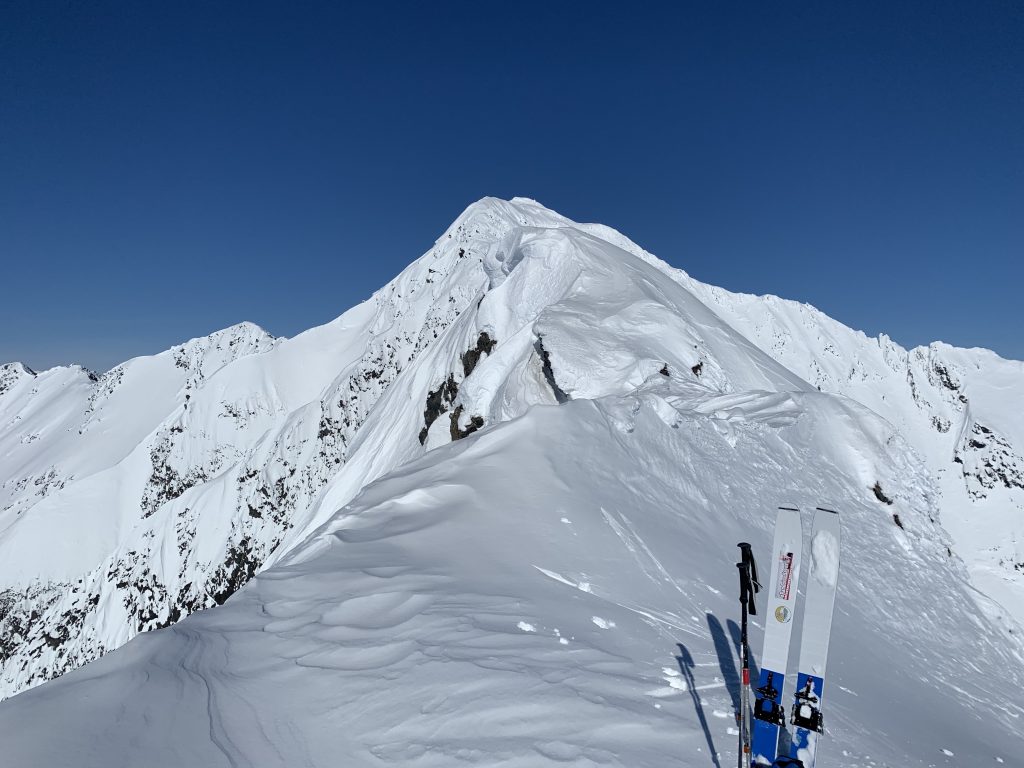
South ridge of Boggs from the false summit:
The initial section of the south ridge from the false summit wasn’t too spicy (only mildly exposed and with relatively soft snow for good booting), but the crux of the entire route came quickly.
From here a very steep, firm, and exposed down climb is necessary (it required actual sticks with the ice tool and careful footing with crampons):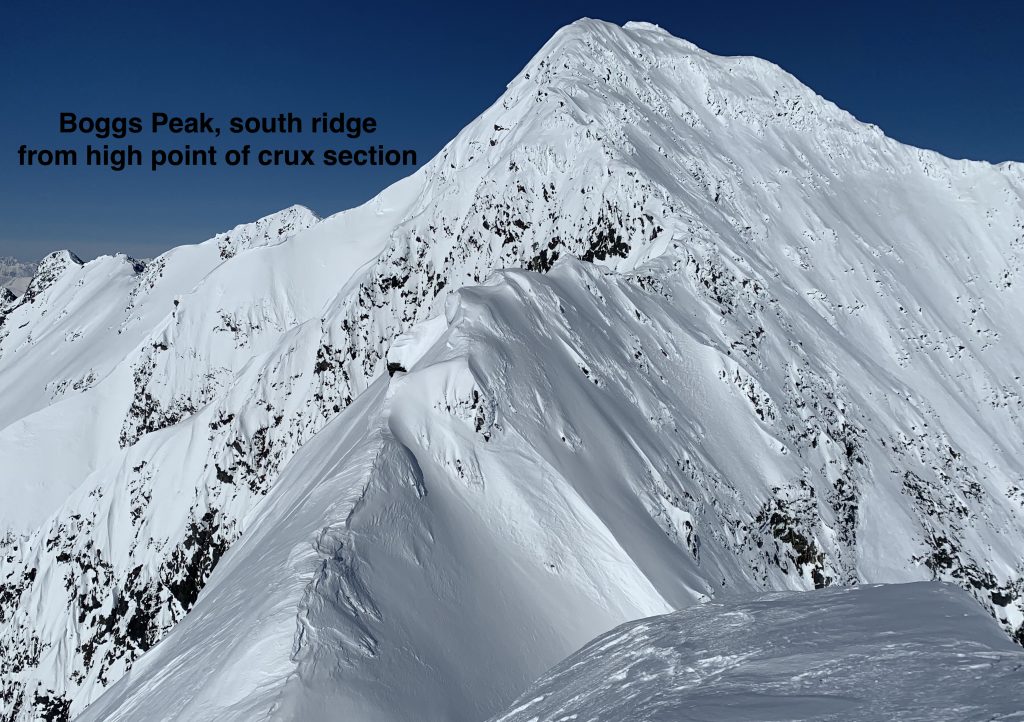
Looking back at the crux section:
Jess on the false summit (with a closer look at the crux section):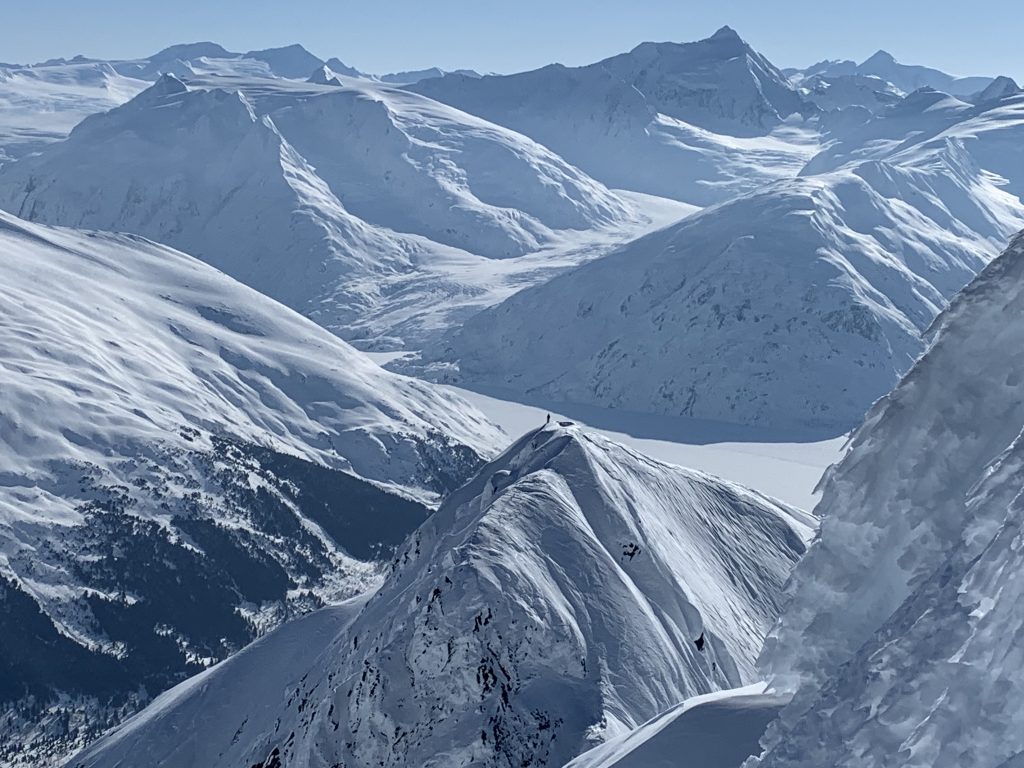
Beyond the crux section the ridge was engaging and required some thoughtful routefinding, but the climbing solid and exposure not as threatening.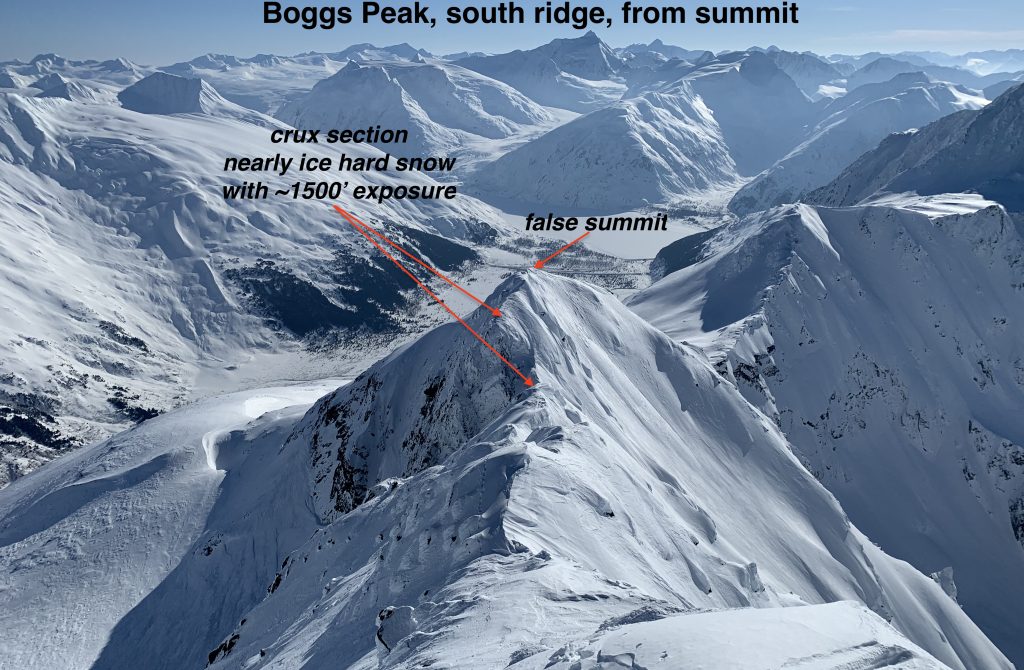
Video of Begich & Boggs ascents:

